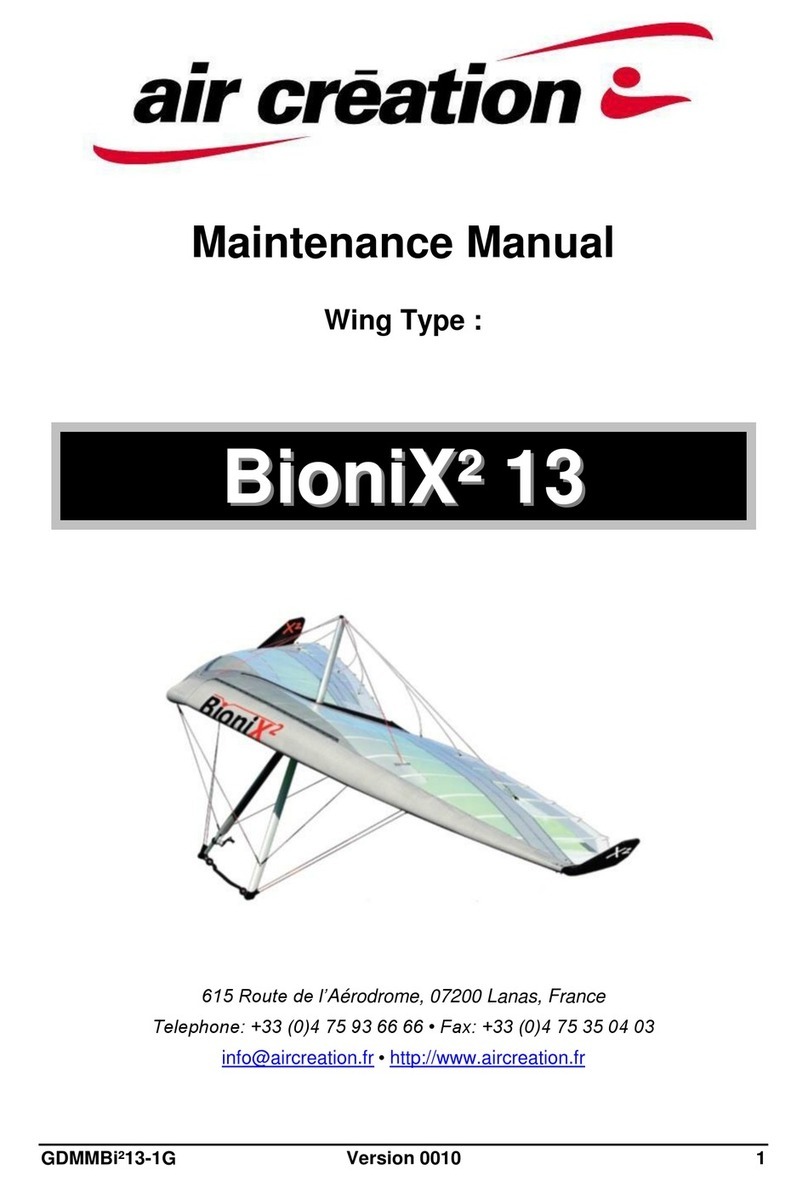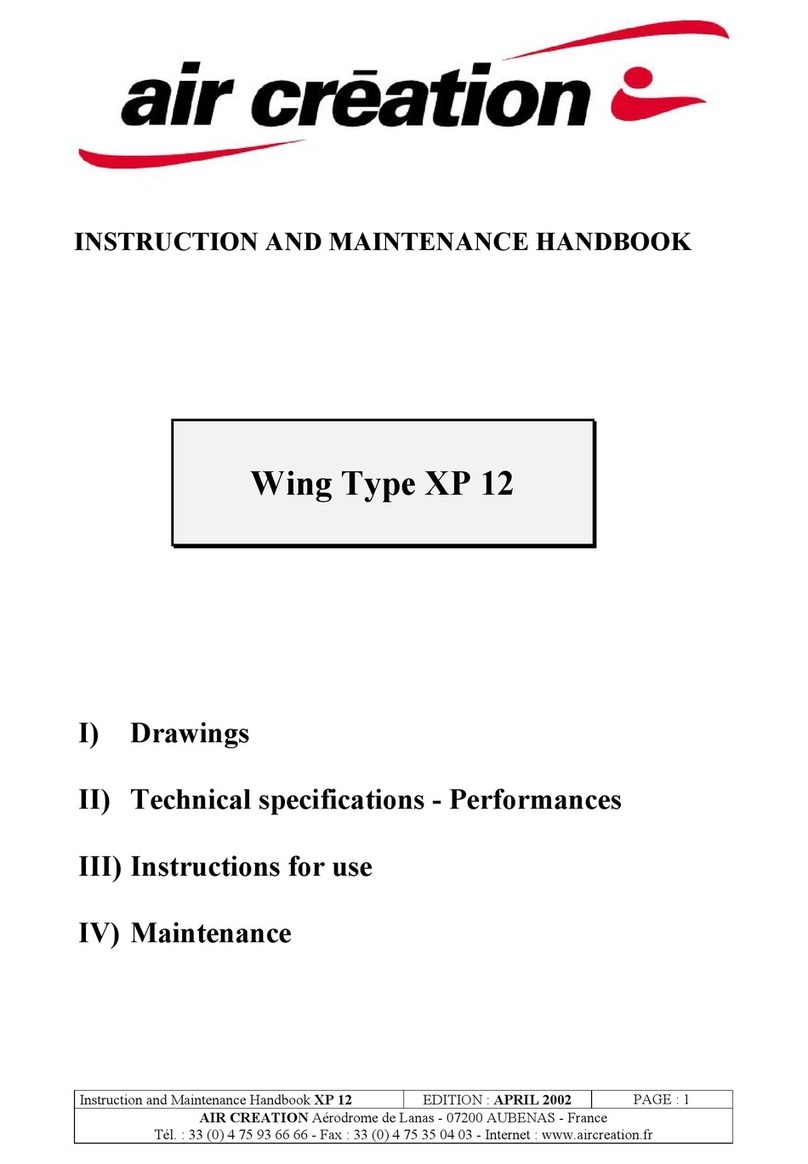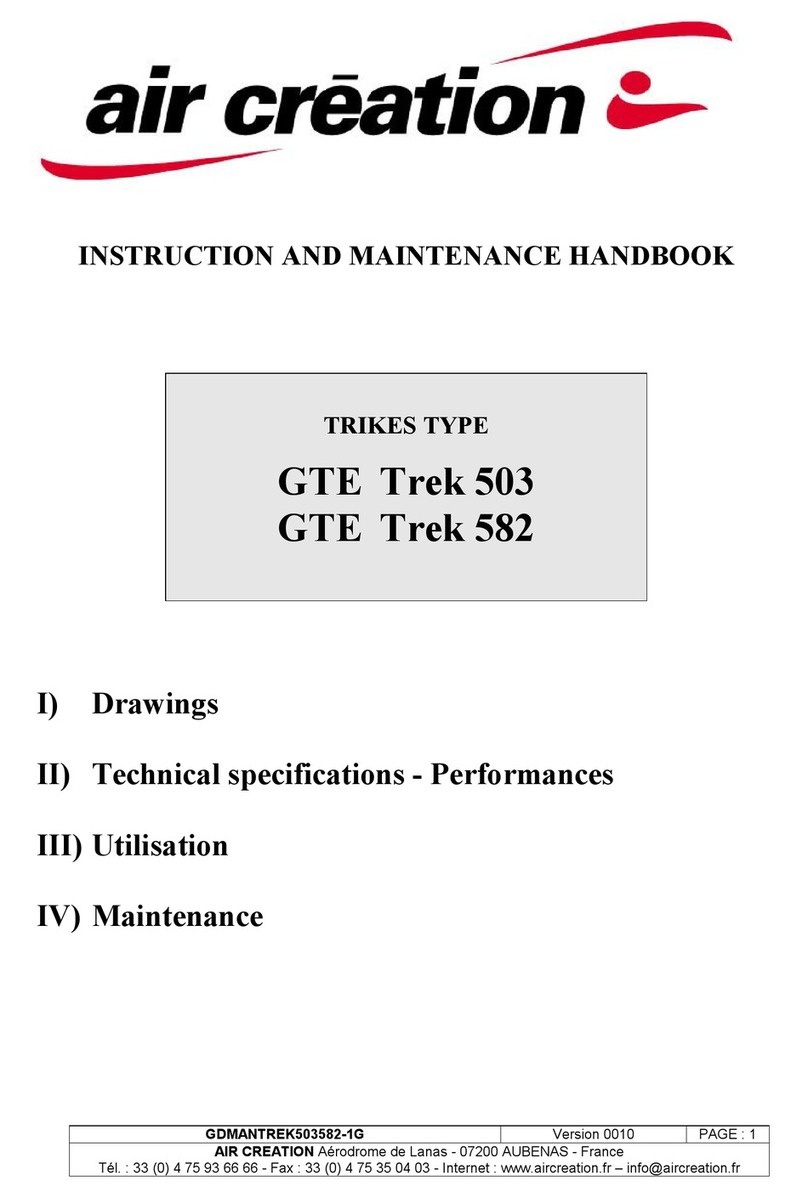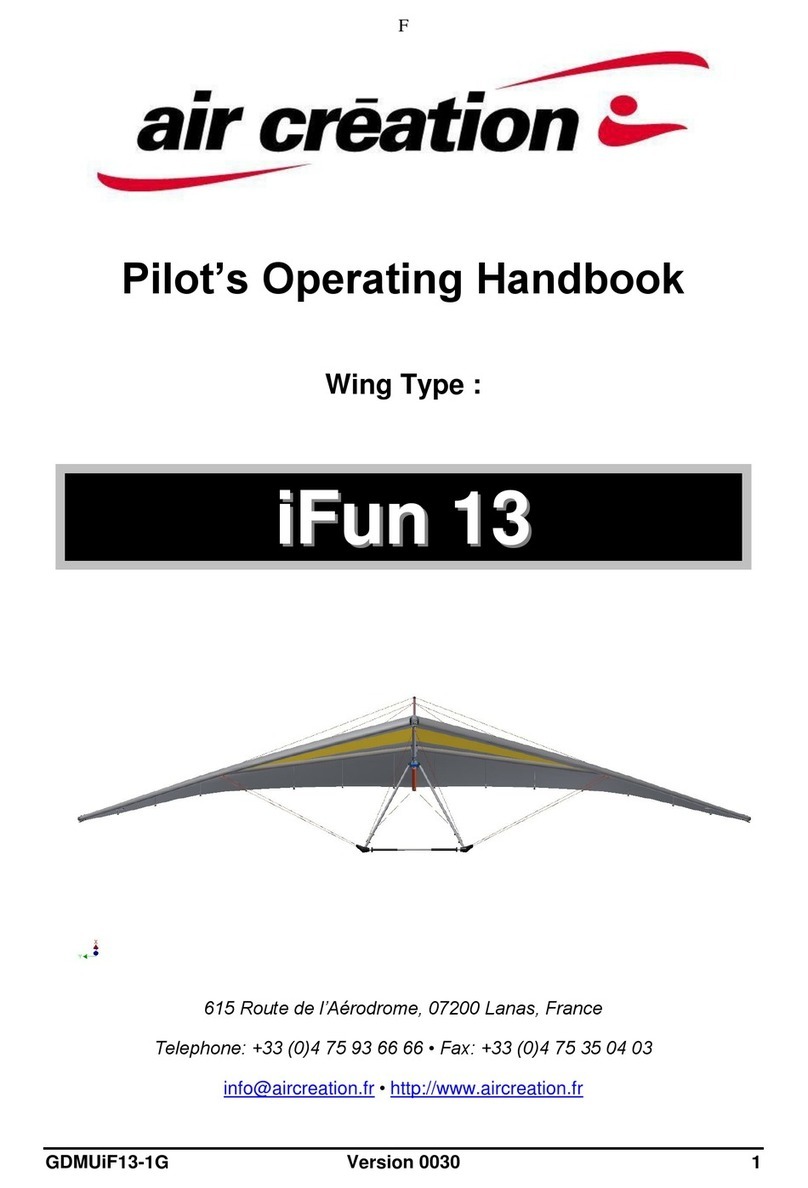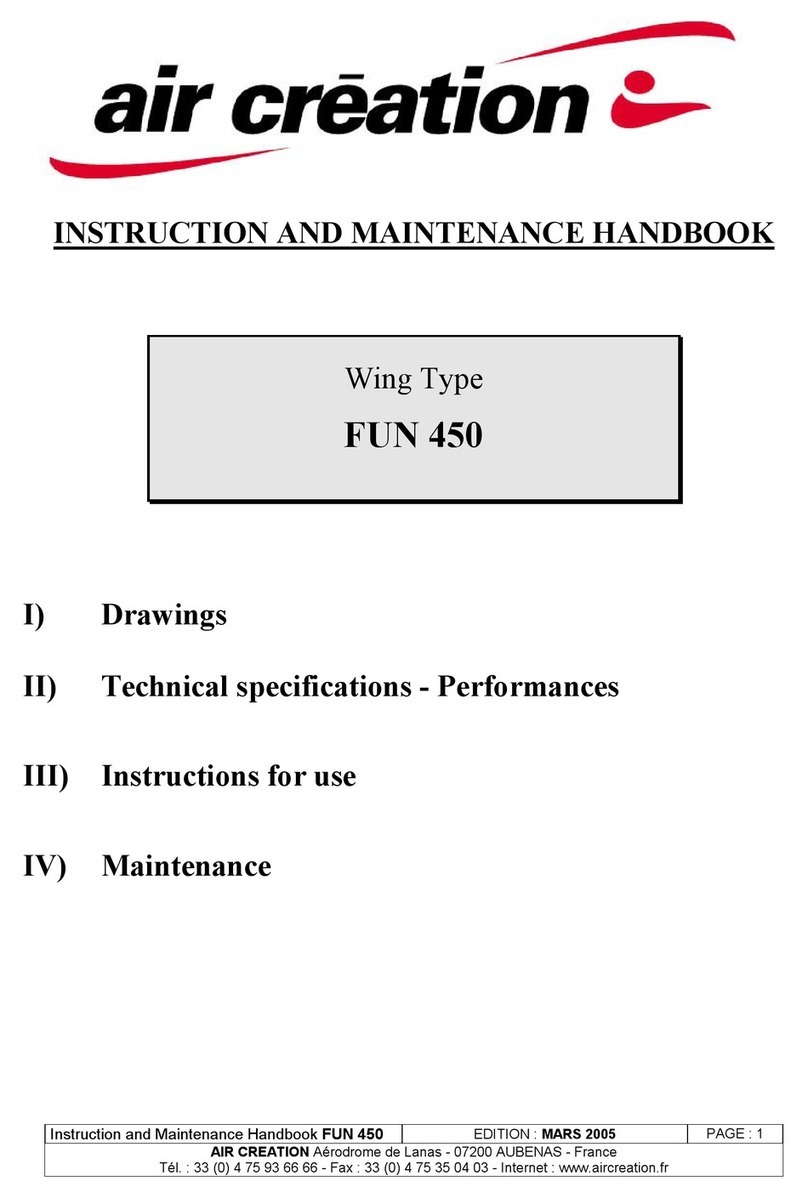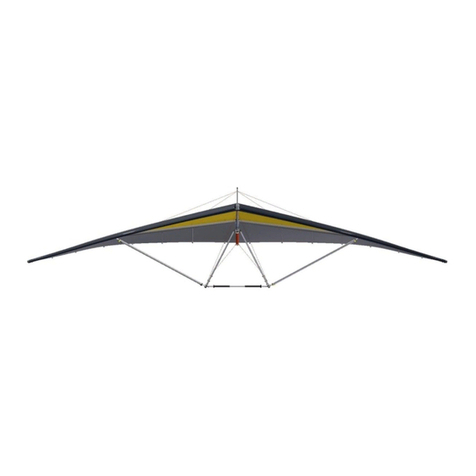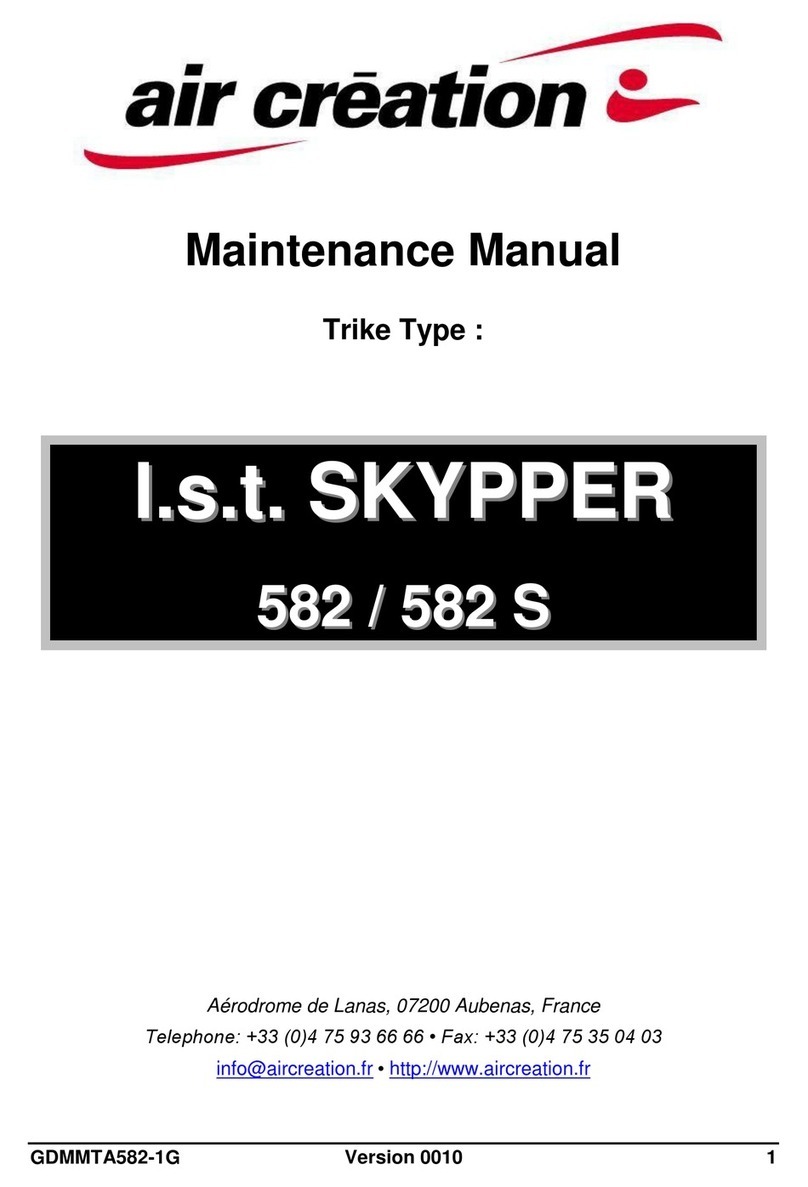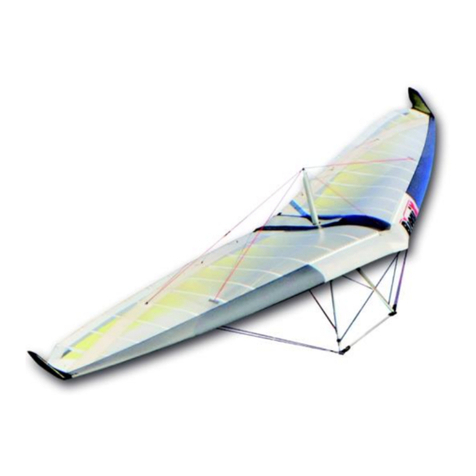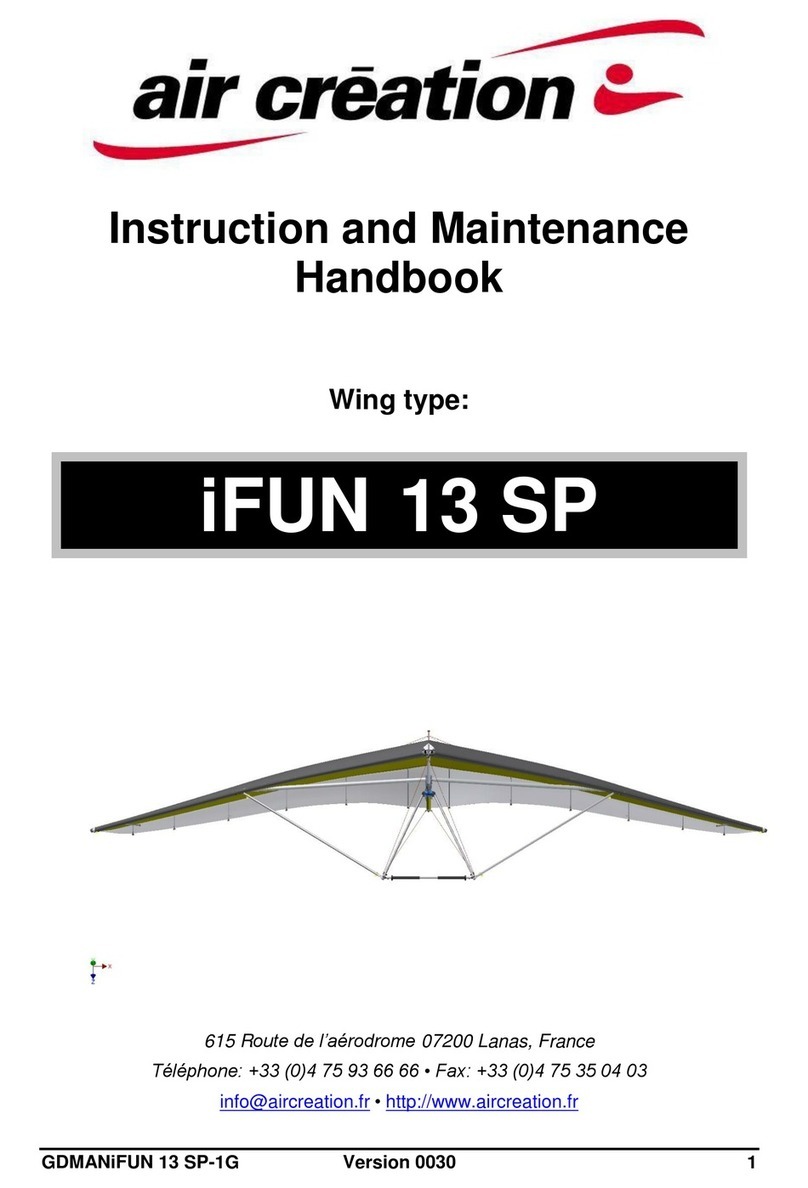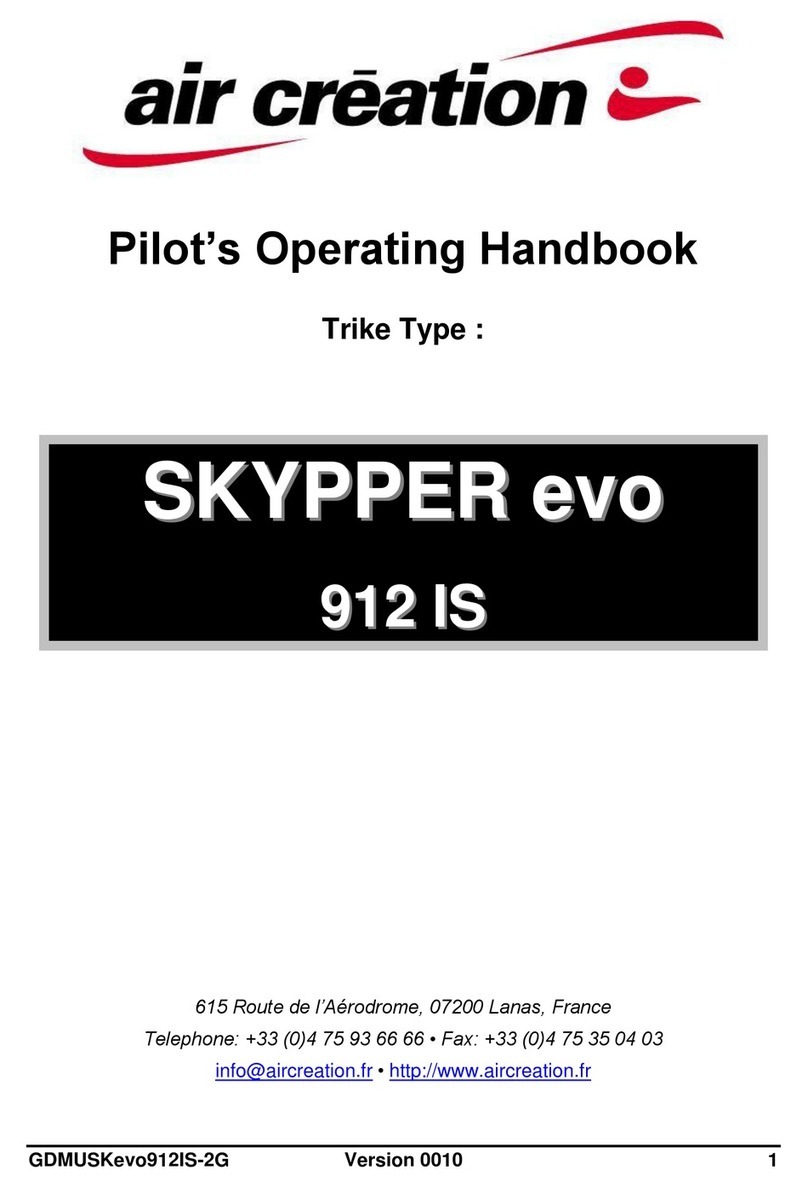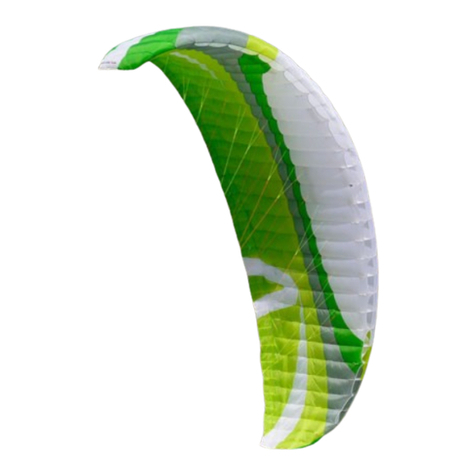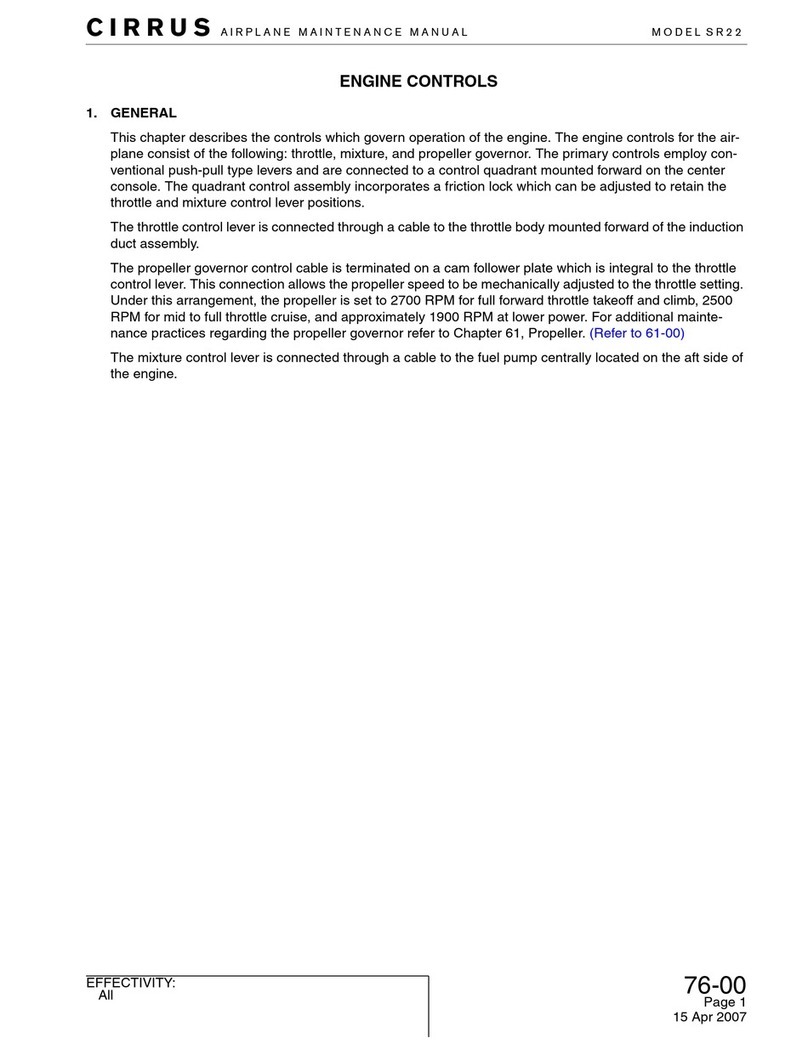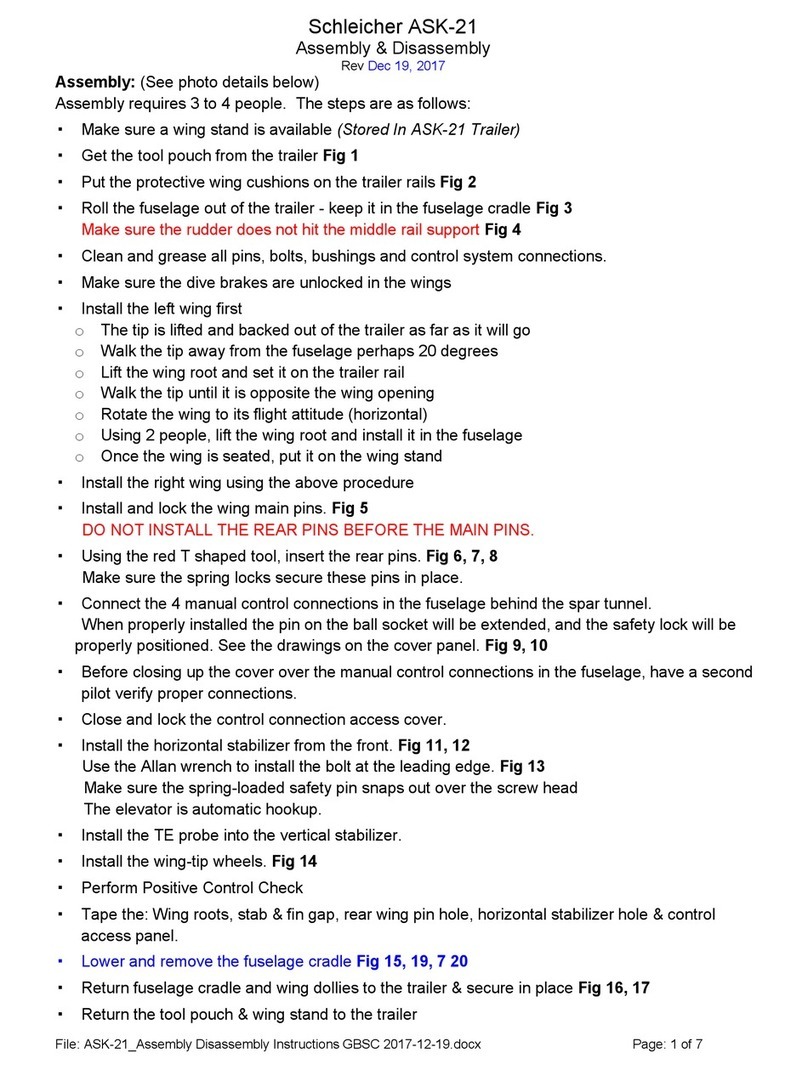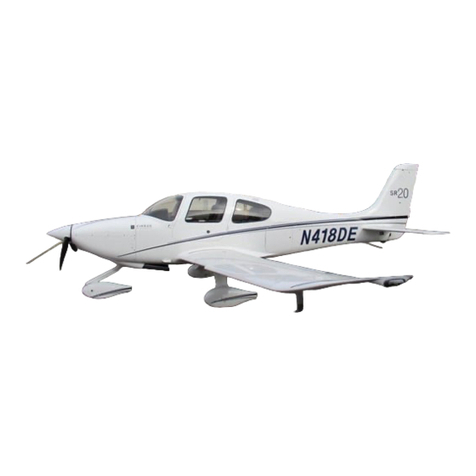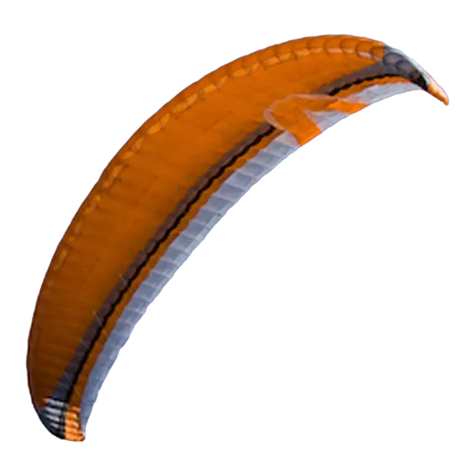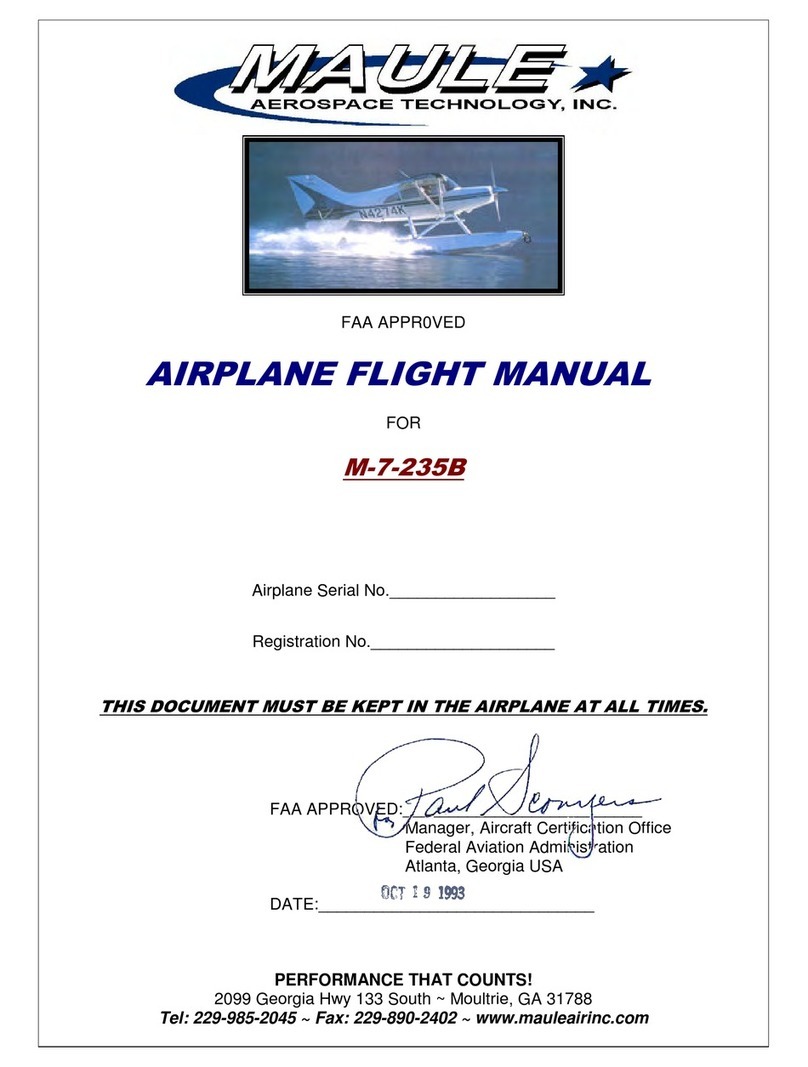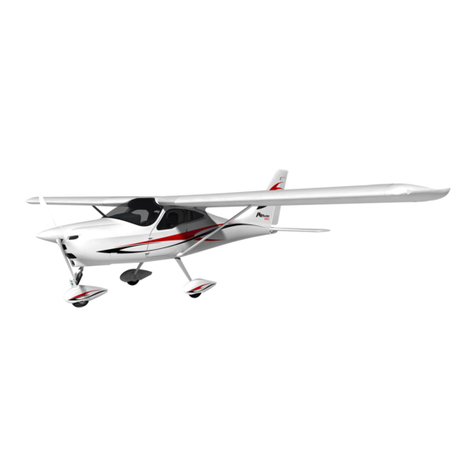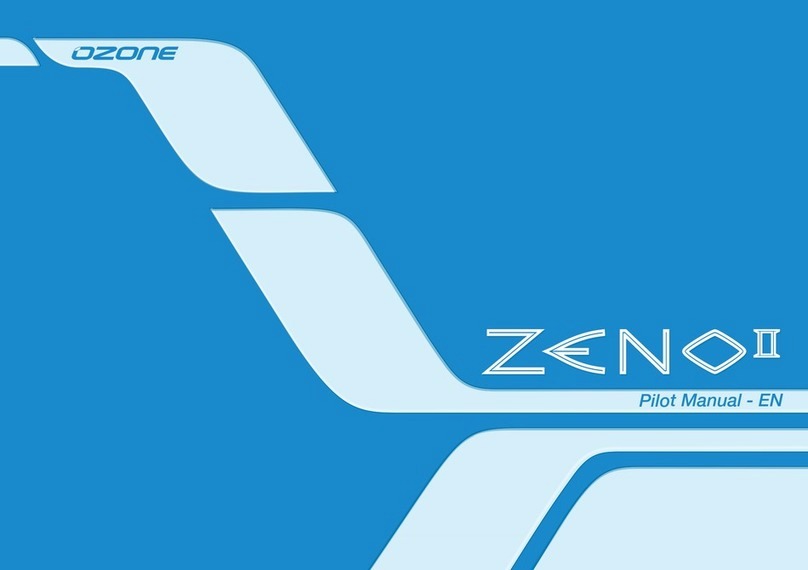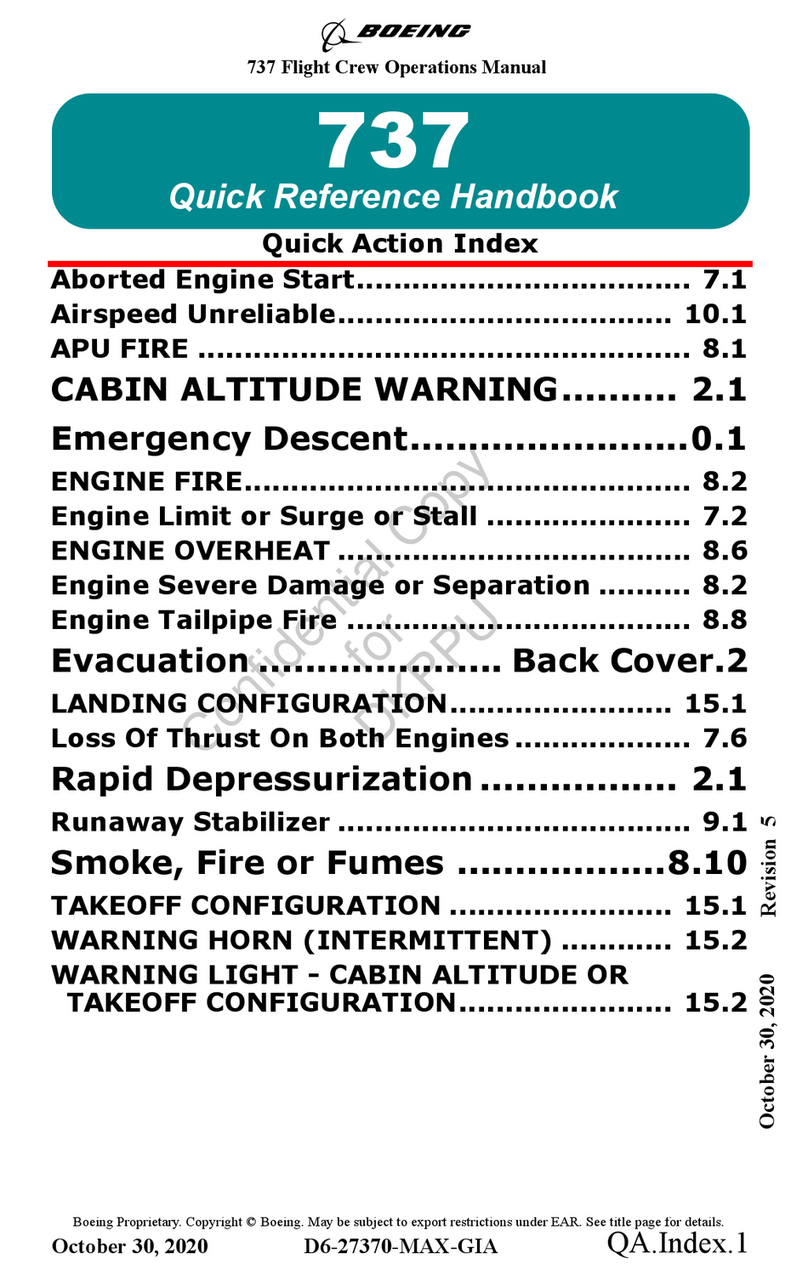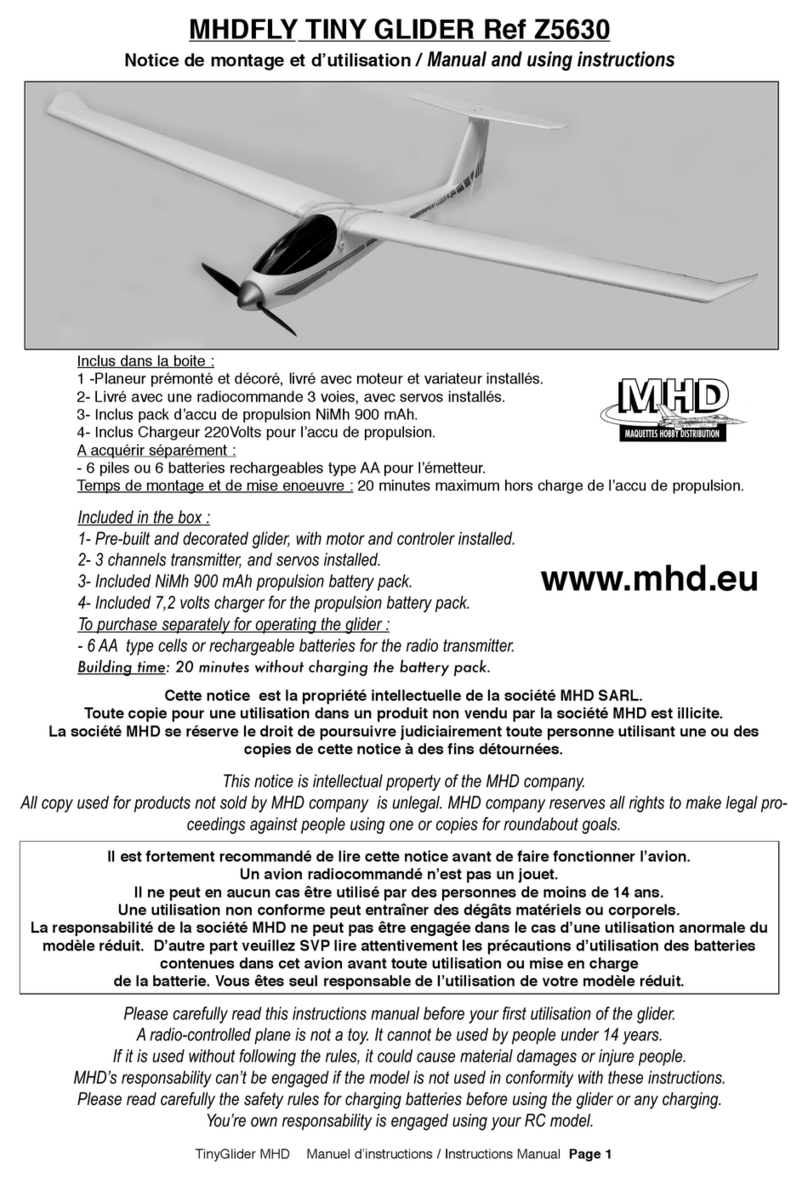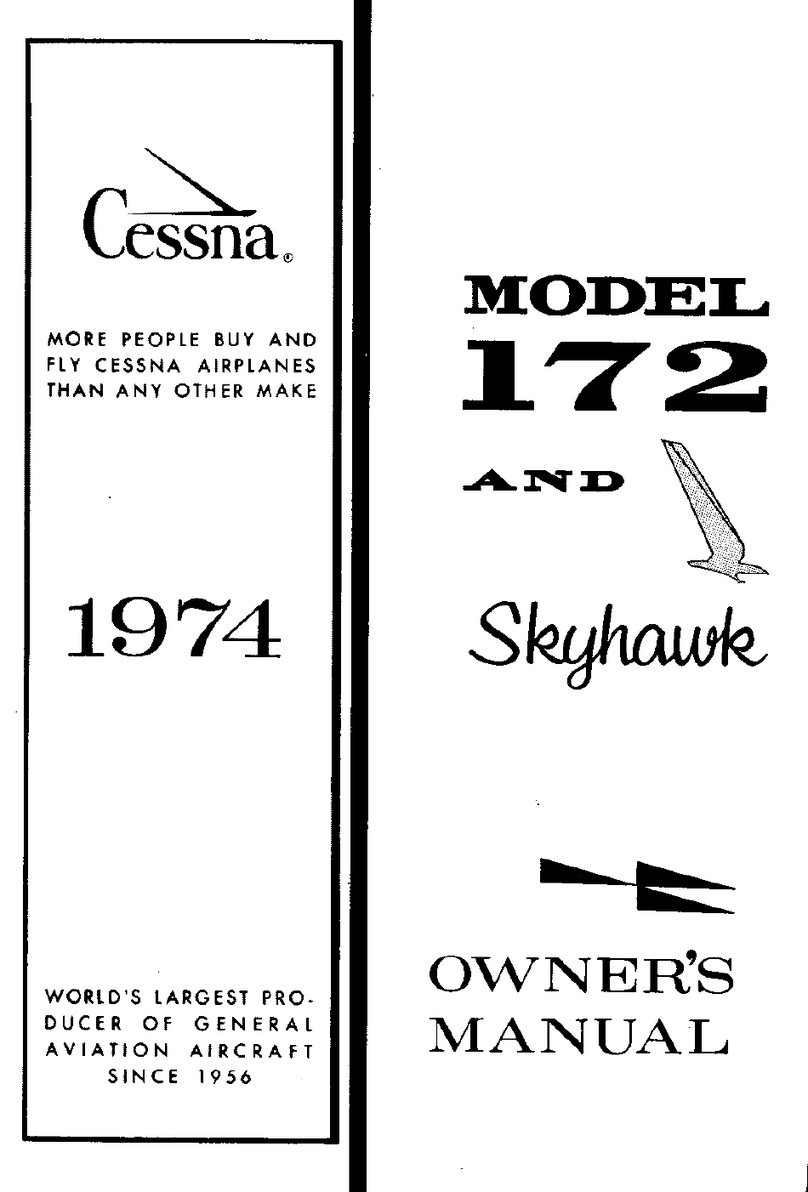
GDMUiFXL-evo-1G Version 0010 10
9. Pull the cross tube swan catch tensioner towards the trailing edge, then hook it to the rail screw at
the keel tip (Figure 5-2). To ease the operation, carefully center the A-frame, ensure that the tabs
and heat shrink coverings of the lower lateral cables do not get stuck in the sail opening at the
cross tube/leading edge connection and that the stainless steel tabs line up with the control bar.
10. Pull down the swan catch tension lever and fix it in the rail with the pushpin.
11. Raise the nose of the wing and lift it on its A-frame. To avoid dragging the tips of the wing on the
ground, it is recommended that a second person hold the back of the keel.
12. Fix the front lower longitudinal cables in the rail under the nose plate with the help of the swan
catch tension lever and the pushpin.
13. Install the tip struts in the appropriate openings on the leading edge. Insert them all the way into
their housings and rotate them until they block. Check that they are correctly blocked by pulling
them towards the rear. Raise the sail for ease of access.
14. Place the two straight battens of the wing tips on the plastic lug attached to the tube of the leading
edge, and tighten the upper surface with the clasps. Attach the undersurface bungees by pulling
them over the clasps.
15. Close the fabric closures at the tips by means of their velcros.
16. When connecting the trike, slip the security fastening cable through the loop in the security strap
aligned with the front of the kingpost, behind the kingpost, through the loop again, and then fix it
to the beam of the trike. The security cable should pass under the tensioning cables. This operation
secures the trike as well as fastening the crossbar tensioning system.
For the final stage of lifting the wing on the trike, follow the instructions in the trike
operating handbook.
5.1.2 Disassembly
Dismantling is carried out in reverse order of the assembling operations.
Before setting the wing flat on the ground, insert the protective padding on the
keel over the hang point bracket.
Before folding up the two half-wings,place the leather cap on the tensioning
device lever and slip it inside the sail at the front of the kingpost foot to avoid tearing
any part of the sail or the frame while closing the leading edges.
Never release the tension of the wing without first removing the battens of the wing
tips which rest on the leading edges.
